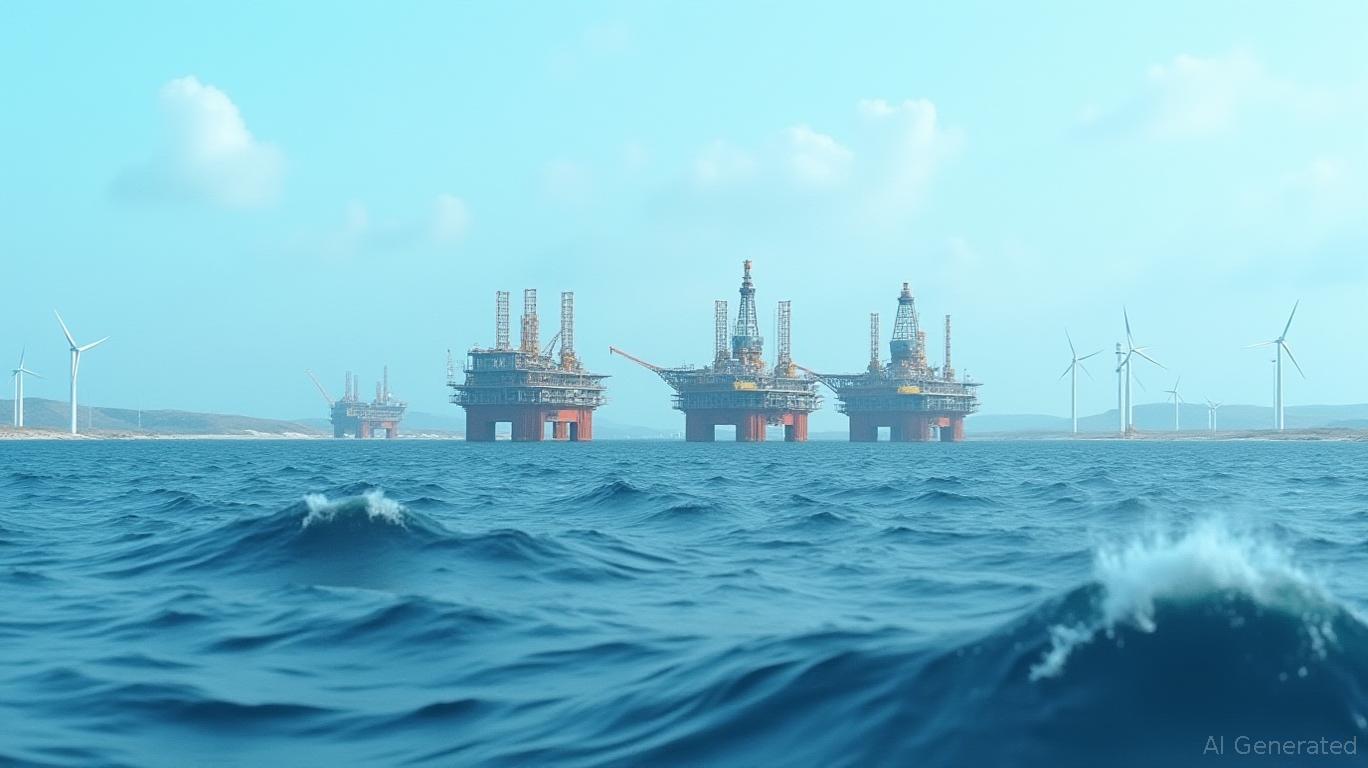Chevron: Navigating the Energy Crossroads - A Buy in Transition?
The global energy landscape is undergoing a seismic shift as governments and corporations accelerate the transition to lower-carbon economies. For legacy oil giants like
(CVX), this presents both challenges and opportunities. Can Chevron maintain its fossil fuel dominance while pivoting toward renewables? And does its dividend sustainability and long-term growth potential justify an investment today? Let's dissect the data to find answers.Fossil Fuel Dominance: A Foundation of Strength
Chevron remains a titan in traditional energy, with Q1 2025 production averaging 3.35 million barrels of oil equivalent per day (MMboe/d), fueled by high-margin assets in the Permian Basin and Gulf of America. The Ballymore field in the latter region, now online, is part of a strategic push to boost Gulf production to 300,000 net barrels per day by 2026.

Crucially, Chevron's $6.9 billion in shareholder returns (dividends and buybacks) in Q1 2025 underscores its financial resilience. Despite a 36% year-over-year drop in earnings to $3.5 billion, its cash flow from operations ($7.6 billion) remains robust, thanks to disciplined capital allocation and cost-cutting ($2–3 billion in structural savings by 2026).
Renewables: A Strategic Hedge or Distraction?
Chevron's renewable investments, while smaller than its fossil fuel operations, are strategically targeted. Its $1.5 billion 2025 budget for low-carbon projects (down 25% from 2024) aligns with a long-term goal of $10 billion in cumulative spending by 2030. Key initiatives include:
- Lithium extraction: Acquiring 125,000 net acres in Texas/Arkansas for direct lithium extraction (DLE), a tech that could reduce environmental impact while tapping into the EV battery boom.
- Hydrogen and carbon capture: Aiming for 150,000 tons/year of hydrogen production and 25 million tons/year of carbon offsets by 2030, leveraging partnerships like those with GE Vernova for data center energy solutions.
Critics argue these moves are insufficient to offset fossil fuel decline, but proponents see them as risk mitigation. Chevron's carbon intensity reduction target (35% by 2028 vs. 2016 levels) and $8 billion allocated to lower-carbon projects since 2021 suggest it's serious about adapting.
Dividend Sustainability: The Bedrock of Attractiveness
Chevron's dividend yield of 6.5% (as of June 2025) is a key draw for income investors. While earnings dropped in Q1, the company maintained its $1.71 quarterly dividend, supported by cash flow stability.
The dividend's safety hinges on Chevron's ability to sustain cash flow amid lower oil prices and regulatory headwinds. Its low debt ratio (16.6% net debt/total capital) and focus on high-return projects (e.g., Permian Basin, Hess acquisition) provide a buffer. However, a prolonged downturn in fossil fuel demand could test this resilience.
Risks and Roadblocks
- Regulatory Uncertainty: Stricter emissions rules, methane regulations, and carbon taxes could raise compliance costs.
- Transition Risks: A faster-than-expected shift to renewables could erode fossil fuel demand, pressuring profits.
- Project Execution: Lithium and hydrogen ventures rely on unproven technologies and scalability. Chevron's DLE pilot, for instance, faces technical and permitting hurdles.
- Geopolitical Volatility: Conflicts in the Middle East or sanctions on Russia could disrupt oil markets.
Investment Thesis: A Balanced Play
Chevron is not a “pure play” on renewables, but its dual strategy offers advantages:
- Income stability: The dividend yield is compelling for risk-averse investors.
- Fossil fuel moat: Its legacy assets generate cash to fund transitions and dividends.
- Valuation: At a forward P/E of 12.5x, it's cheaper than peers like Exxon (14.2x) and offers better growth visibility in renewables.
However, long-term investors must weigh the pace of energy transition. A rapid shift to renewables could leave Chevron's fossil assets stranded. Conversely, a gradual transition would favor its diversified portfolio.
Final Call: Hold for Dividends, Monitor Transition Progress
Chevron is a hold for income investors seeking stable dividends and exposure to energy's “middle ground.” For those bullish on renewables, its moves into lithium and hydrogen warrant attention, but the bulk of its value remains tied to hydrocarbons.
Recommendation:
- Buy: If you believe fossil fuels remain critical for 10+ years, and Chevron's renewables pivot reduces downside risk.
- Hold: For income-focused investors.
- Avoid: If you foresee rapid decarbonization rendering its oil/gas reserves obsolete.
Chevron's success hinges on executing its dual strategy flawlessly—a tightrope walk that could define its future.

Comments
No comments yet